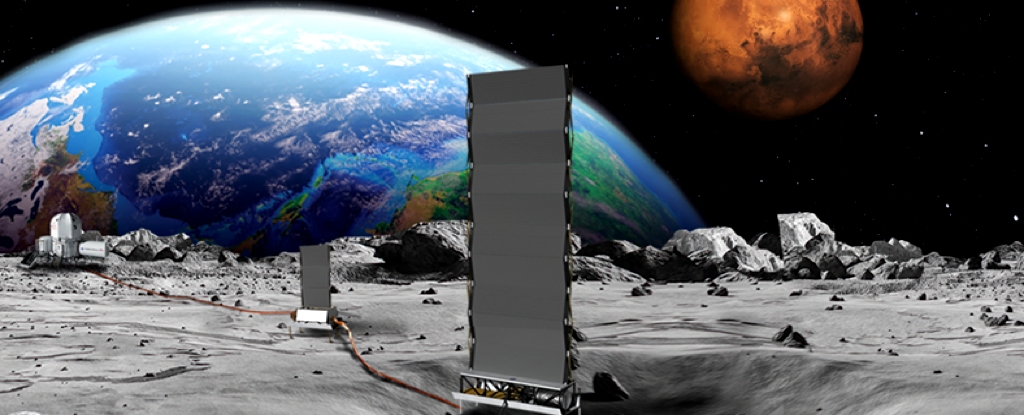What’s the most important thing you need to live and work on the Moon? Power. For NASA’s upcoming Artemis program, getting power to lunar bases is a top priority.
That’s why the agency created its Fission Surface Power Project. The idea is to develop concepts for a small nuclear fission reactor to generate electricity on the lunar surface.
The project just finished its initial phase (which began in 2022), which consisted of three $5 million contracts to commercial partners to develop fission reactor designs. NASA selected Lockheed Martin in Bethesda, MD, Westinghouse of Cranberry, PA, and IX of Houston, TX each for a 12-month Phase 1 award to further develop preliminary designs.
Each partner was tasked to offer a design of the reactor and systems for power conversion, heat rejection, and power management and distribution.
Of course, the partners needed to provide estimated costs for their systems and development plans. The ultimate goal was to create a system that could support lunar bases for a decade. The designs would also serve as pathways to plan and build similar systems on Mars.
Power systems spell the difference between success and failure in any mission. For the Moon and Mars, it’s the difference between life and death. Nuclear power is the most likely route to service long-term power needs.
“A demonstration of a nuclear power source on the Moon is required to show that it is a safe, clean, reliable option,” said Trudy Kortes, program director, Technology Demonstration Missions within NASA’s Space Technology Mission Directorate at NASA Headquarters in Washington.
“The lunar night is challenging from a technical perspective, so having a source of power such as this nuclear reactor, which operates independent of the Sun, is an enabling option for long-term exploration and science efforts on the Moon.”
Why Fission Reactors?
Let’s face it – living and working on the Moon presents a lot of challenges. Safe, clean power helps overcome many of the dangers that lunar explorers will face. Solar power provides a dependable source of power to keep things going.
But, at least half of the time, solar power grids will be in darkness during the lunar night. That’s not to say solar power won’t be used. But, another power source is important to have. That’s where fission reactors come in handy.
NASA and other agencies could put nuclear reactors in places that spend their time in partial or full shadow. In many cases, in situ reservoirs of ice exist in the same regions.
The advantage of nuclear reactors is that they can operate full-time, regardless of whether there’s sunlight or not. That’s a big plus for power needs during the 14-night-long lunar night.
Note that NASA isn’t saying that ONLY nuclear fission generators will be used on the Moon. A combination of solar and nuclear installations will likely supply the electricity needs of habitats and science labs.
Reactor Specs for the Moon and Beyond
In its solicitation for further work on the designs, NASA wanted to see plans for reactors that would last at least a decade without human intervention. This reduces any threats from accidental radiation exposure and allows lunar explorers to focus on their primary science and exploration tasks.
The specs for the reactor design specify that it be under six metric tons and produce 40 kilowatts of power. That is enough to demonstrate the capability of the system and provide power for habitats, grids, and science experiments. If you put the same reactor on Earth in a typical neighborhood, it would be enough to power 33 homes.
The agency designed the requirements to be open and flexible so that each company could feel free to explore new directions when it came to the designs they submitted.
“There was a healthy variety of approaches; they were all very unique from each other,” said Lindsay Kaldon, Fission Surface Power project manager at NASA’s Glenn Research Center in Cleveland.
“We didn’t give them a lot of requirements on purpose because we wanted them to think outside the box.”
Now with feedback from the commercial partners, NASA begins working on a Phase 2 solicitation for 2025. After that, the agency expects delivery of a system for use on the Moon in the early 2030s. In the distant future, after the systems have gone through their “baptism by fire” on the Moon, NASA will likely redesign a nuclear fission reactor specifically for use on Mars.
This article was originally published by Universe Today. Read the original article.





